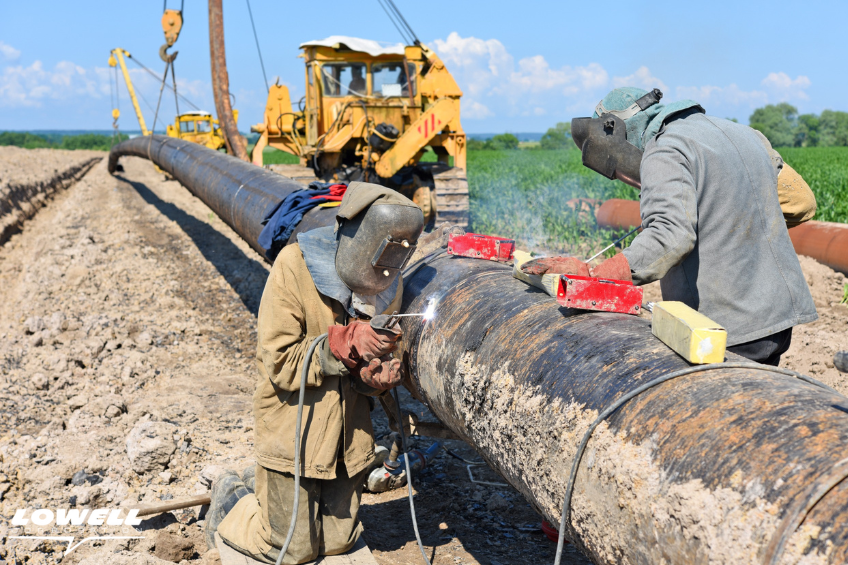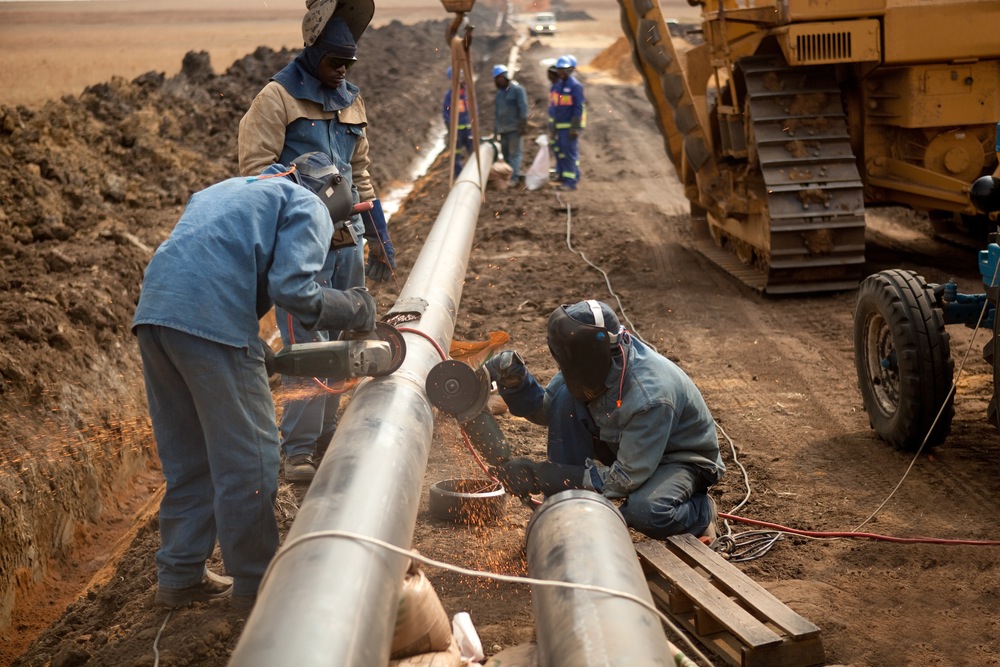Creek Pipe Midland TX: The value of emergency planning
Wiki Article
Recognizing the Secret Attributes of Pipeline Solutions and Their Effect On Performance
Pipeline solutions play a crucial duty in different industries, affecting operational efficiency noticeably. Trick attributes, such as innovative surveillance innovations and upkeep methods, are important for lessening downtime. Additionally, regulatory conformity assurances security and ecological defense. However, the interaction between design, infrastructure, and economic factors can complicate these processes. Understanding just how these components influence general performance elevates important concerns regarding best practices and future advancements in the field.The Function of Innovation in Pipeline Surveillance
As developments in modern technology continue to advance, the significance of efficient pipe tracking has ended up being increasingly evident. Modern pipeline systems rely upon advanced surveillance tools that improve functional effectiveness and safety and security. Technologies such as real-time data analytics, sensors, and drones offer operators with prompt insights right into pipe conditions, allowing them to discover leakages, deterioration, and other potential problems before they rise into substantial troubles.The combination of Internet of Things (IoT) devices has actually transformed conventional tracking methods, allowing for constant security and automated coverage. This positive strategy not just decreases dangers however additionally maximizes maintenance schedules and resource allowance. Furthermore, progressed software systems help with information visualization and analysis, equipping decision-makers to react quickly to abnormalities. Jointly, these technological advancements not only enhance pipeline stability yet also foster ecological stewardship by mitigating the prospective effect of leakages and spills.
Maintenance Techniques for Enhanced Effectiveness
Efficient maintenance methods are vital for optimizing pipe performance. Applying anticipating upkeep methods, sticking to regular evaluation methods, and creating durable emergency action plans can considerably boost operational dependability. These strategies not just minimize downtime however also add to the overall safety and security and honesty of pipeline systems.Predictive Upkeep Techniques
Anticipating maintenance techniques are increasingly acknowledged for their capacity to enhance operational efficiency in pipeline solutions. By leveraging information analytics and keeping track of innovations, these methods make it possible for drivers to anticipate tools failings prior to they happen. This aggressive method reduces unintended downtime, lowers upkeep prices, and extends the life expectancy of essential properties. Sensing units and IoT tools play a crucial function in accumulating real-time information, allowing for the evaluation of devices wellness and efficiency patterns. Equipment learning formulas analyze this information to recognize patterns and forecast prospective issues. Subsequently, pipeline drivers can set up maintenance tasks throughout non-peak times, enhancing source appropriation and ensuring constant operation. Ultimately, the fostering of anticipating upkeep promotes a much more reputable and efficient pipeline framework.
Routine Assessment Protocols
Routine assessment procedures function as a cornerstone of upkeep methods focused on boosting efficiency in pipeline operations - Creek Pipe local contractor. These protocols include systematic evaluations of pipeline honesty, concentrating on discovering possible concerns before they rise. Routine assessments typically consist of visual analyses, leakage detection technologies, and pressure surveillance to ensure peak performance. By sticking to well-known routines, drivers can determine rust, material wear, or obstruction, therefore lessening downtime and repair expenses. Additionally, data collected during assessments can notify predictive maintenance initiatives, enabling a positive approach to pipeline management. Eventually, routine examinations not just expand the life-span of pipe infrastructure however also add to safer and more reliable transport of sources, strengthening total functional efficiencyEmergency Action Preparation
Emergency reaction preparation is crucial for preserving effectiveness in pipeline operations, guaranteeing that drivers are prepared to address unexpected incidents swiftly and effectively. A well-structured emergency situation reaction plan includes clear methods, assigned duties, and communication approaches to minimize threats connected with pipeline failures. Normal drills and training improve team readiness and familiarize personnel with emergency situation procedures. Furthermore, having conveniently offered resources, such as spill control equipment and emergency situation contact listings, can significantly lower reaction times. By integrating real-time tracking modern technologies, operators can swiftly identify and react to issues, lessening ecological effect and operational downtime. Ultimately, a detailed emergency situation feedback strategy not only safeguards assets and personnel but additionally strengthens the overall performance of pipe solutions.Regulative Compliance and Safety Requirements
Governing conformity and safety and security criteria play a vital duty in the pipe services market. Creek Pipe local contractor. Sticking to sector regulations ensures that companies carry out effective safety and security protocols and take the chance of administration techniques. This commitment not just protects workers and the environment yet likewise boosts total functional effectivenessCompliance With Industry Regulations
Conformity with sector guidelines is crucial for making sure the safety and performance of pipe procedures. Regulatory structures, such as those developed by the Epa (EPA) and the Pipeline and Hazardous Materials Safety Administration (PHMSA), established stringent requirements that drivers have to follow. These laws cover numerous aspects, consisting of pipeline style, building and construction, maintenance, and surveillance, guaranteeing that systems operate securely and effectively. Non-compliance can result in severe fines, functional hold-ups, and ecological risks. By sticking to these guidelines, pipeline firms not just protect public security and the environment yet likewise improve their functional efficiency. Inevitably, regulatory conformity promotes trust amongst stakeholders, making certain that pipeline solutions can run seamlessly in an affordable landscape while fulfilling lawful commitments.
Security Procedure Implementation
Reliable security protocol application is a vital element of pipe operations, very closely linked to regulative compliance and safety and security standards. Sticking to these procedures not only guarantees the security of employees but likewise safeguards the atmosphere and infrastructure. A robust security structure includes regular training, thorough inspections, and the use of appropriate security tools. Organizations has to remain attentive in upgrading their procedures to reflect changes in regulations and technical developments. Compliance with recognized safety and security standards lessens the risk of accidents and enhances functional effectiveness. In addition, a society of safety fosters staff member engagement and accountability, adding to general business success. Ultimately, reliable safety method application is paramount in preserving the honesty of pipeline solutions and attaining long-term Pipeline services Midland Texas sustainability in operations.Danger Management Methods
Implementing durable danger administration approaches is important for ensuring that pipeline operations adhere to regulative needs and safety and security standards. Organizations must identify prospective threats and analyze threats connected with pipeline tasks. This involves performing thorough assessments, utilizing advanced monitoring innovations, and preserving conformity with market laws. Normal training for employees on safety procedures enhances situational understanding and prepares groups to react properly to emergencies. In addition, developing backup plans and performing drills can significantly minimize dangers. Working together with regulatory bodies makes certain alignment with evolving safety and security criteria. By prioritizing risk management, pipeline solutions can improve operational performance while protecting both the atmosphere and public safety and security. Ultimately, a positive method to take the chance of administration cultivates a culture of safety and security within the market.Pipeline Layout and Framework Considerations
Just how can the layout and framework of pipelines affect total operational effectiveness? The configuration of pipes plays a crucial function in determining their performance. Reliable style decreases friction losses, thus minimizing energy intake throughout fluid transport. Variables such as diameter, material selection, and design straight effect flow prices and maintenance requirements.Furthermore, calculated placement of shutoffs and monitoring systems enhances operational control and safety. Midland pipeline construction company. Framework considerations, consisting of availability for repair and maintenance, considerably impact downtime and total efficiency
Incorporating advanced modern technology for real-time monitoring helps with prompt detection of leaks or ineffectiveness, ensuring swift reactions to problems. The overall structural honesty, affected by material resilience and environmental factors, additionally forms long-lasting operational success. Thoughtful style and durable framework are important for maximizing pipeline performance, inevitably contributing to the dependability and earnings of pipeline services.
Ecological Influence and Sustainability Practices
While the need for pipe solutions remains to expand, comprehending the environmental influence and adopting sustainability techniques has ended up being increasingly essential. The construction and procedure of pipes can notably influence communities, wild animals environments, and water sources. To reduce these impacts, business are executing sophisticated innovations and techniques targeted at reducing exhausts, avoiding spills, and minimizing land disturbance.
Sustainability initiatives usually include utilizing eco-friendly products, enhancing power efficiency, and utilizing renewable energy sources to power procedures. In addition, firms are significantly conducting complete environmental assessments before job initiation, ensuring conformity with guidelines and stakeholder involvement.

Cost Administration and Financial Aspects in Pipeline Providers
As the pipe market grows, reliable cost monitoring and recognizing financial factors come to be essential for preserving competitiveness. Companies deal with numerous financial stress, consisting of fluctuating product costs, labor expenditures, and regulative compliance costs. To browse these obstacles, pipeline provider must embrace calculated monetary planning and budgeting methods.Purchasing modern technology can enhance functional performance, inevitably decreasing expenses gradually. Additionally, efficient job management assurances that sources are alloted effectively, decreasing delays and unforeseen expenditures.

Market problems, such as need for energy and geopolitical factors, likewise affect financial viability. Companies have to remain active, changing their approaches in action to these external aspects.
Frequently Asked Questions
What Are the Different Types of Pipeline Services Available?
Different sorts of pipeline solutions include transport, storage, maintenance, examination, and repair service. Each solution plays a critical duty in making sure the seamless movement of materials, boosting security, and minimizing functional disruptions throughout different industries.How Typically Should Pipeline Inspections Be Carried Out?
Pipeline inspections must be performed regularly, usually every one to three years, depending on the kind and condition of the pipeline. A lot more constant inspections may be needed for older or high-risk pipes to guarantee safety and stability.
What Are the Main Causes of Pipeline Failings?
The primary sources of pipeline failures consist of rust, faulty construction, product issues, exterior damages, leakages, and operational mistakes. Each aspect adds significantly to possible risks, highlighting the relevance of routine upkeep and monitoring for security.Just How Can Companies Enhance Pipeline Solution Integrity?
Business can enhance pipeline solution dependability by applying normal upkeep routines, using sophisticated tracking technologies, carrying out thorough evaluations, purchasing employee training, and adopting aggressive danger management methods to expect and minimize potential failures.What Function Do Operators Play in Pipeline Services?
Operators play a necessary role in pipeline solutions by making sure secure transportation, keeping devices, keeping track of system stability, coordinating upkeep, and responding to emergency situations. Their know-how directly influences functional efficiency and decreases interruptions in solution distribution.Report this wiki page